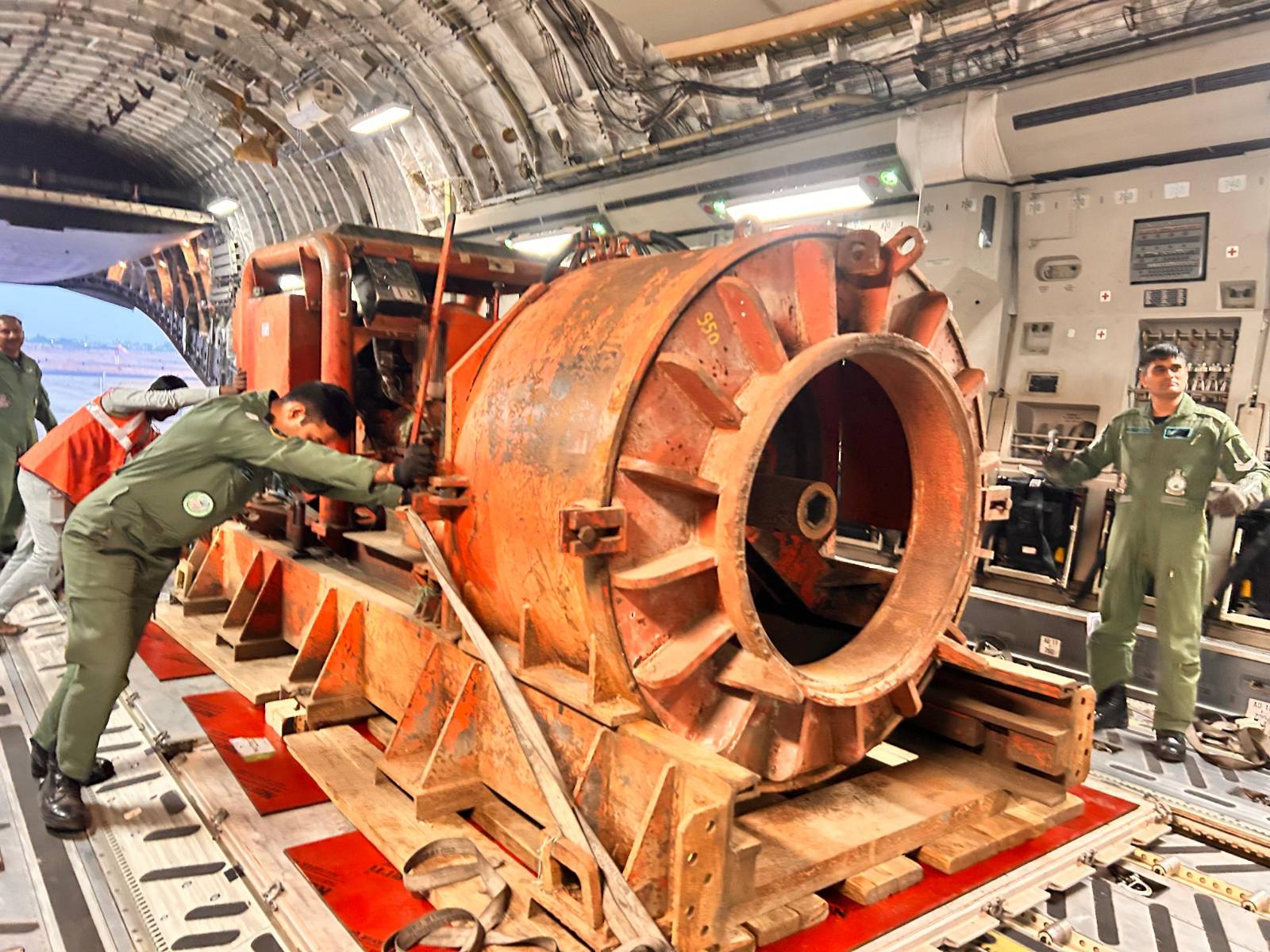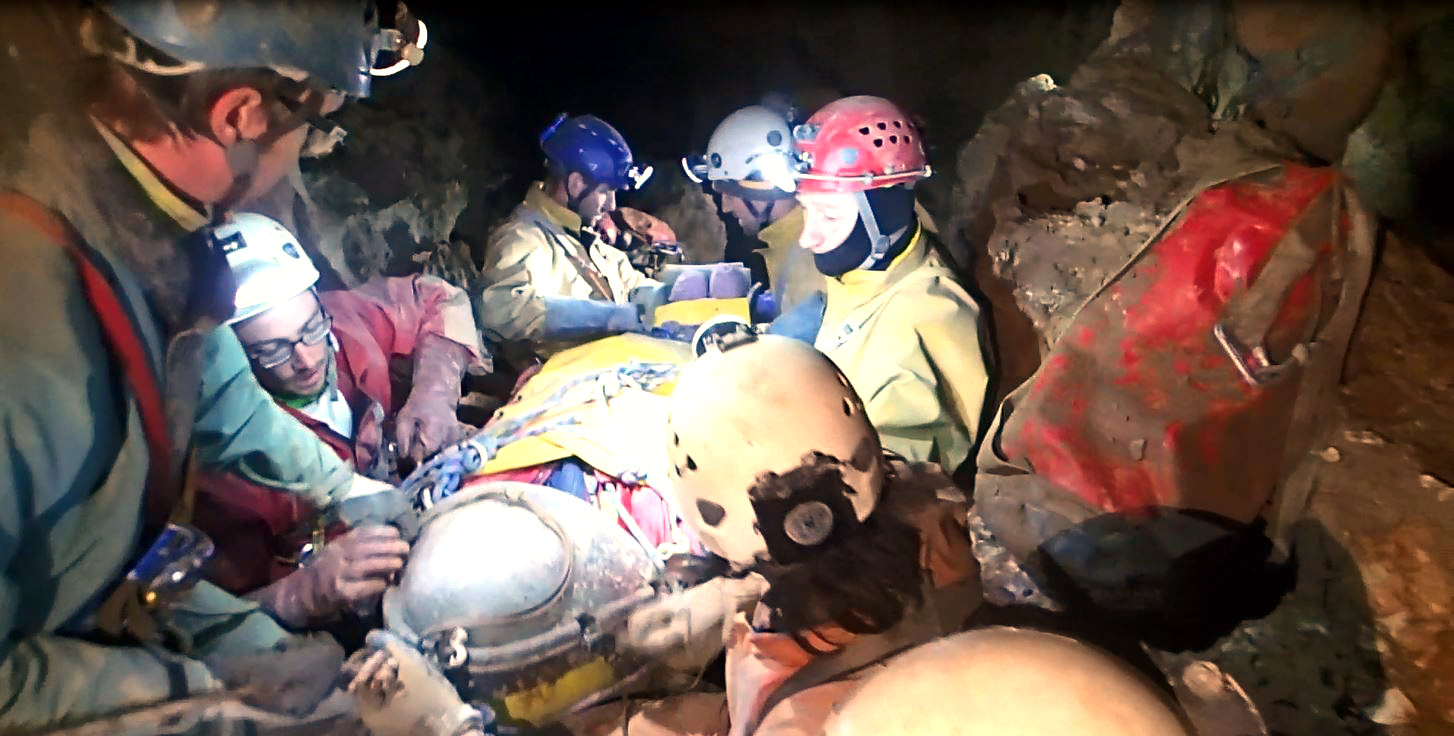In a race against time, Indian authorities are intensifying their rescue operations as 41 workers remain trapped in the aftermath of a tunnel collapse in Uttarkashi, Uttarakhand.
Indian rescuers released the first footage of the trapped workers who have been stuck inside the Silkyara tunnel for ten days now. An endoscopic camera sent through a temporary 6-inch food pipeline captured the visuals.
VIDEO | Visuals of workers trapped inside Silkyara tunnel in Uttarkashi, Uttarakhand. Rescue efforts are underway to pull out the 41 workers stuck inside the collapsed tunnel since November 12.#UttarakhandTunnelCollapse pic.twitter.com/idT9wbbVCH
— Press Trust of India (@PTI_News) November 21, 2023
The rescue team pushed through a six-inch-wide pipeline into the crumpled tunnel to supply more significant portions of food and other necessities. Calling it the “first breakthrough” at the site, NHIDCL Director Anshu Khalko said, “We have sent the pipe 53 meters to the other side of the rubble, and the trapped workers can hear and experience us.”
The tunnel collapse happened ten days ago and caused a severe health and safety crisis. Since then, non-stop efforts have been made to rescue the workers stuck in the collapsed tunnel section.
The collapse occurred in the Silkyara Bend – Barkot tunnel during its construction, leading to a precarious situation gripping the whole country’s attention. The rescue teams have been tirelessly working to reach the trapped workers, employing a supply tunnel drilled into the rubble to communicate and access.

The workers built the tunnel, part of an ambitious project to enhance India’s transportation network. Media reports suggest that the Prime Minister’s Office (PMO) has taken charge of the rescue operations and is exploring various options to free the trapped workers.
Local police, India’s Disaster Management Authority, and the State Disaster Response Fund collaborate on the rescue efforts. Initially, the slow progress and the risk of additional rubble falling into the shaft impeded attempts to dig through the debris.
Essential supplies such as chickpeas, puffed rice, dry fruits, and medications have been delivered through a 4-inch compressor pipeline to sustain the trapped workers.
In addition to the local agency’s efforts, the Indian government also sought international assistance and reached out to the Thai team known for successfully rescuing a boys’ soccer team from a flooded cave in 2018.
The team, specializing in cave diving, played a crucial role in the safe extraction of twelve boys and their soccer coach, who were trapped for nearly three weeks inside the flooded Tham Luang cave.
World’s ‘Biggest’ Cave Rescue
The current intense rescue operation in Uttarakhand, India, evokes reminiscence of a significant event from 2014 when Germany executed one of the largest cave rescues in history.
In June 2014, speleologist Johann Westhauser, alongside two colleagues, embarked on an expedition into Germany’s Riesending cave, renowned as the country’s most profound and longest pit cave.
However, the dangerous cave, known for its technical challenges, became the backdrop for a dramatic rescue operation. On June 8, Westhauser, already 1,000 meters into the cave, suffered a brain injury from a rockfall.
With limited communication options, one team member remained with him while the other embarked on a 10-hour ascent to call for help, covering a distance of 6 km.
Emergency procedures ensued, with three groups of cave rescuers entering the cave on the same evening. A cave-link system facilitated essential communication between the entrance and the accident site. Additional rescue teams and helicopters joined the efforts.

Physician Martin Göksu reached Westhauser on June 11, diagnosing a minor traumatic brain injury. Subsequently, Westhauser was considered fit for transport.
The cave’s paths were secured with fixed ropes and footrests. The manual evacuation involved up to 60 people at peak times. The operation lasted 11 days, involving over 700 multinational cave rescuers.
Rescue efforts at the Riesending complex, located near the German town of Berchtesgaden on the Bavaria-Austria border, had engaged not only Germans and Austrians but also experts from Croatia, Switzerland, and Italy due to their proficiency in navigating similar deep caves.
The rescue, dubbed a “chapter of alpine rescue history,” cost around 960,000 Euros. Westhauser, deemed responsible for a substantial amount, later recovered and resumed cave exploration in 2016.
The cave’s entrance was sealed in June 2014, and access has since been restricted, necessitating a special permit. A six-year cleanup effort completed in 2020 removed over one ton of debris that safeguarded the cave’s ecosystem.
- Contact the author at ashishmichel(at)gmail.com
- Follow EurAsian Times on Google News




